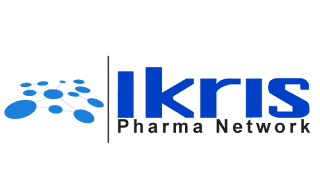What is myelodysplastic syndrome?
A group of disorders that causes abnormal blood cells is called myelodysplastic syndrome. Generally, the myelodysplastic syndrome occurs due to dysfunction of bone marrow that produces blood cells.
Myelodysplastic syndrome symptoms: A myelodysplastic syndrome at an early stage does not cause any sign or symptoms however visible signs appear with the advancement of the disease. These symptoms are:
- Leukopenia
- Thrombocytopenia
- Anemia
- Shortness of breath
- Fatigue
- Petechiae
How serious is myelodysplastic syndrome?
There are some complications in the signs and symptoms of myelodysplastic syndrome. These are:
- Reduction in the number of red blood cells can cause anemia and tiredness.
- Due to only a few white blood cells, the chances of serious infection is very high.
- A small cut or bruises may lead to heavy bleeding.
Some patients already suffering from myelodysplastic plastic syndrome may also develop leukemia (a cancer of blood cells).
What is the prognosis for myelodysplastic syndrome?
When people are detected myelodysplastic syndrome at an early stage, the chances of avoiding complications and symptoms is higher in comparison with patients detected at an advanced stage.
How long can you live with myelodysplastic syndrome?
A patient suffering from myelodysplastic syndrome has been classified into five different classes based on their risk factor. These classes are:
- Very low
- Low
- Intermediate
- High
- Very high
The average life expectancy of a patient suffering from myelodysplastic syndrome after the diagnosis is:
- Very low: 8.8 years
- Low: 5.3 years
- Intermediate: 3 years
- High: 1.6 years
- Very high: 0.8 years
Myelodysplastic syndrome diagnosis: Some of the Diagnostic techniques used in the detection of Myelodysplastic syndrome are discussed below:
Physical examination: The doctor will look upon the symptoms and physical changes on the skin of the patient.
Blood tests: Blood tests done to determine the number of white blood cells, red blood cells, and platelets. This test is also performed to check the shape, size, and appearance of different blood cells.
Biopsy: A small portion of bone marrow is removed along with the liquid bone marrow to check the sample in the laboratory for any abnormalities.
Can myelodysplastic syndrome be cured?
Unfortunately, myelodysplastic syndrome can't be cured completely however treatment processes are done to minimize the side effects, symptoms, and avoid any complications.
Myelodysplastic syndrome drug treatment: Some of the major drug used in the treatment of myelodysplastic syndrome which is used for:
Increase the number of blood cells: Drugs that work as the growth factor include darbepoetin alfa (Aranesp), epoetin alfa (Epogen, Procrit).
Suppresses your immune system: There is some medication that decreases the need for red blood cell transfusion.
Mature blood cells: Some drugs help in increasing the life expectancy and decreasing the risk of acute myelogenous leukemia. These drugs include decitabine (Dacogen) and azacitidine (Vidaza).
What is azacitidine used for?
Azacitidine (Vidaza), is used for the treatment of myelodysplastic syndrome, for which it holds the approval by the U.S. FDA on May 19'th, 2004.
Apart from this, It is also sometimes prescribed for the treatment of acute myeloid leukemia, as a hypomethylating agent, and for the treatment of chronic myelomonocytic leukaemia.
How do you give Azacitidine?
Azacitidine suspension is recommended to be given subcutaneously. Each injection should be given at least 1 inch from the previous site and tender, bruised, red, or hard site should be avoided.
How long can you take azacitidine?
You can take azacitidine dose every 28 days for a minimum of 6 cycles.The azacitidine treatment should be continued as long as the patient continues to advantage or until disease progression.
What type of drug is azacitidine?
Azacitidine specifically belongs to the class of medicines named demethylation agents. The azacitidine tablets & injection acts by helping the bone marrow in order to produce normal blood cells and by destroying the abnormal cells in the bone marrow.
What is the azacitidine injection price?
The azacitidine injection price in india is quite reasonable. A WHO-GDP & ISO certified pharmaceutical wholesaler company can provide you the best azacitidine 100 mg injection price.
Is azacitidine a chemotherapy?
Azacitidine injection belongs to an anti-cancer chemotherapy drug. This injection is either used alone or in combination with other medications.
How fast does an azacitidine work?
Basically each day injection in a week followed by 3 weeks off treatment comprises one treatment cycle. Azacitidine injection work after the completion of 6 treatment cycles.
Note: To know about this product, please refer to the full prescribing information.
Read - Breast Cancer Facts
Multiple Myeloma and Mantle cell lymphoma





No comments:
Post a Comment